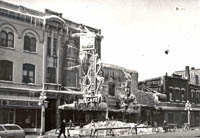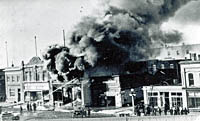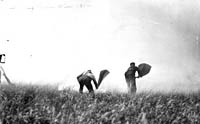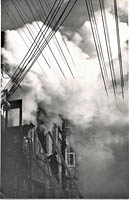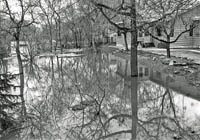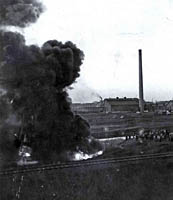3. Disasters in Saskatchewan
Blizzards, Drought, Floods and Fire
Brrrr! It’s cold!
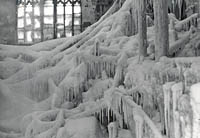 The
weather especially in Southern Saskatchewan changes without warning. Winters are often quite cold and long. It is common to be hit with several
blizzards every winter. The winters are very cold and produce drifts of snow that are usually solid and covered with ice.
The
weather especially in Southern Saskatchewan changes without warning. Winters are often quite cold and long. It is common to be hit with several
blizzards every winter. The winters are very cold and produce drifts of snow that are usually solid and covered with ice.
The winter of 1906—07 was one of the worst ever. Extreme cold and blizzards took their toll as nearly 70 per cent of range cattle in southwest Saskatchewan
died.
The coldest temperature ever recorded in Saskatchewan was -56.7 degrees Fahrenheit (-49.3 degrees Celsius) in Prince Albert on February 1, 1893.
It’s Dusty!
People forgot to call it Saskatchewan in the 1930s, it was “the dust bowl.” Severe dust storms blew day and night. There was little rain. Sloughs and dugouts disappeared. Relief programmes, feed and seed, tried to ease the situation, but if you ever talk to someone who lived through those times, they never forgot them. Everything was grey and dusty.
Floods
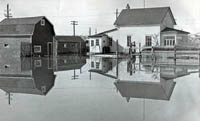 On July 3, 2000, 13 inches (32 cm) of rain fell at Vanguard in a period of 10 hours. Flooding, sewer backup, and the danger of mould growing behind
walls and under floors made a disaster situation. The Red Cross was mobilized to give clean-up information, Home Depot cleaning kits and vouchers
for emergency needs. The Red Cross
issued its first-ever appeal for disaster relief in Saskatchewan.
On July 3, 2000, 13 inches (32 cm) of rain fell at Vanguard in a period of 10 hours. Flooding, sewer backup, and the danger of mould growing behind
walls and under floors made a disaster situation. The Red Cross was mobilized to give clean-up information, Home Depot cleaning kits and vouchers
for emergency needs. The Red Cross
issued its first-ever appeal for disaster relief in Saskatchewan.
Fire and Smoke Damage
So many main streets in Saskatchewan burned to the ground as prairie fires threatened towns, or wooden buildings caught fire from poor chimneys. In the early days, the ability to put out fires was limited, a small horsedrawn tank or a bucket brigade. After a while, many main street buildings came to be made of bricks.
Fire ravages, but smoke damage is equally deadly and damaging to property. Many early newspapers reported fire damage extensively.

